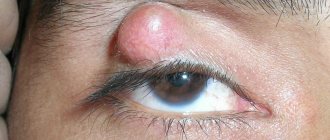Chinese, Koreans, Japanese... Few Europeans can accurately determine who is who. It is not at all clear how to distinguish them from each other. “Why is this so important,” the reader will think.
To the Caucasian race, all Asians look alike, and vice versa.
The relations between our peoples on the world political arena are becoming closer. International trade relations are also flourishing. In order to avoid getting into trouble when communicating with a representative of a particular nation, it would be nice to learn to understand their characteristics, which will help in the future to quickly distinguish one from another. This is what we will try to do.
Face
Knowledge of physiognomy will help to unravel the Asian phenomenon most accurately.
Koreans have a somewhat square face, characteristic angular features, a small narrow flattened nose, a miniature mouth, and a high forehead. The outline of the hairline frames the forehead like a rainbow. Eyebrows "house". Skin color is darker than others.
The Chinese face is round, often flat, the nose is wider, especially the wings of the nose. The mouth is a little bigger. High, wide cheekbones stand out. The eyebrows are slightly arched. Skin is lighter.
The Japanese have a more elongated face with a regular oval shape. Their features are softer. Accurate nose. Thin lips frame a normal-sized mouth. Eyebrows are often straight. The brightest of all the mentioned nationalities.
If in front of you is an Asian man with a doll-like face of unimaginable beauty; The standard that came out of the gloss is a Korean who resorted to medical correction. Today, North Korea ranks 1st in the world in plastic surgery. Everyone resorts to it, without gender differences.
IMPORTANT: Although white skin is held in high regard by everyone, there are representatives of certain subcultures in Japan who actively use solariums.
Epicanthus is a distinctive feature of the eye structure
There is a misconception that the eye size of Asians is much smaller than that of the indigenous inhabitants of other continents. In fact, the Koreans, Vietnamese, Japanese and Chinese are in no way inferior to the rest of humanity by this criterion. The only difference is that their eyes are often located on the face with a slight slope, that is, the inner edge is slightly lower than the outer, and the upper eyelid is equipped with an epicanthic fold that almost completely covers the tear duct. In addition, Asians, unlike Europeans, have a dense layer of fat under the skin of the eyelids, so it seems that the area around the eyes is somewhat swollen, and the incision resembles a thin slit.
Eyes
A great way to accurately identify these nationalities is to look closely at their eyes. “Yes, they are all narrow-eyed and it’s certainly not possible to learn to distinguish by their eyes,” many will say. Later you will be able to see that this is far from the case.
Representatives of China are identified by narrow eyes that fly up along the outer edge of the bridge of the nose like the wings of a bird. According to the general perception, they create a cat's face.
The Korean woman has larger ones, almond-shaped.
The Japanese woman’s “black eyes” are placed as if on a horizontal line, slightly protruding, framed on top by horizontal “dashes” of eyebrows.
Girls try to get closer to the appearance of Europeans by increasing the shape of their eyes, actively using decorative cosmetics: thick eyelashes or false eyelashes, often with a deviation from their growth line; eyeliner; tinted eyebrows.
Another characteristic feature of the Asian phenotype is the eyelids. They have a peculiar fold called epicanthus.
Why do Asians have this particular eye shape?
Answered by Stanislav Drobyshevsky
k.b. Sc., anthropologist, associate professor of the Department of Anthropology, Faculty of Biology, Moscow State University. M. V. Lomonosova, author of the book “The Missing Link”, permanent lecturer of the educational project “Arche”, scientific editor of the portal “Anthropogenesis.ru”
To begin with, it is worth noting that the term “Asians” is inaccurate from the point of view of an anthropologist - it would be more correct to say “people of the Asian race” or “Mongoloids”. There is, of course, an assumption that the narrow shape of the eyes with the epicanthus (the fold at the inner corner of the eye. - Ed.) saves the eye from the dust of Central Asia. But this assumption is rather incorrect, since, firstly, the Mongoloids arose in the middle reaches of the Yellow River, and not in Central Asia. Secondly, a narrow opening of the eye does not protect from dust, since dust clogged under the epicanthus is worse than dust in a wide eye, from where it can be washed out by tears. Third, the world is full of groups that live in dusty places but are wide-eyed, such as the Tuareg and Berbers.
- Berber woman in traditional costume. Algeria
- Tuaregs and Berbers have wide eyes despite the fact that they live in dusty and windy places
- In Southeast Asia and Indonesia, many groups do not have epicanthus, and their eye shape is narrow
Apparently, there is no meaning to the shape of the eye. It was created not by classical driving natural selection, but by genetic-automatic processes and sexual selection. Genetic-automatic processes are processes of statistically random changes in the frequencies of neutral traits. For example, genetic drift, when one of the existing variants accidentally passes into the next generation in greater numbers, while the other becomes smaller. That is, if in the first generation there were 50 x 50 people with wide and narrow eyes (and let’s assume that they are inherited without any dominance), then in the next, without any selection, the frequency can become, for example, 45 x 55, and after a number of generations - even 0 x 100. There are other variants of such processes - the “founder effect” and the “bottleneck effect”.
Another factor is sexual selection, where women like an option not because it is healthy, but because they like it. If the women - the ancestors of the Mongoloids - liked men with narrow eyes, then their descendants had the same eyes.
Most likely, mutations created diversity, genetic-automatic processes shifted frequencies to a certain level, and sexual selection picked up and finally strengthened one of the variants.
By the way, not all Mongoloids have epicanthus. In Southeast Asia and Indonesia, many groups do not have it at all, and their eye shape is different.
Hairstyle
Judging by their hairstyle, Chinese women are more conservative and prefer to wear long straight hair; bowl cut haircuts or side-swept bangs are popular among guys.
Korean young men decide to experiment with their hair: they cut off their temples and create standard hairstyles. Girls love slightly bleached hair, different shades of chestnut, and try to give it volume. They also come with short hair.
Residents of Japan are the most advanced in style. Here experiments are carried out both with color (the greatest variety) and with haircuts. Wax is used liberally in shaping the style.
Makeup
A common feature is yellowish skin, white is popular. For this reason, all representatives of the fair sex try to whiten their faces and all visible areas of their skin in every possible way. Cosmetics with an active whitening effect are the most popular products that do not linger on the shelves of retail chains. Correcting the oval of the face using bronzer, sculptor and other various make-up tricks is popular.
Chinese women use little decorative cosmetics, Koreans use more, Japanese women use a lot of makeup for evening makeup. At traditional festivals you can often see “geisha makeup”.
The body is carefully protected from excessive insolation in order to prevent unwanted tanning and skin aging. The whitest-skinned Asians are the Japanese.
This photo of a Korean woman will allow you to compare the change in appearance. Cosmetics have the magical ability to transform narrow eyes.
Body type
Many people believe that all Asians are similar in appearance and build: small and skinny, and in old age - crooked. This is wrong. They are different, but the percentage of overweight people is very small. The reason lies in a healthy diet. Fish, rice, seafood, seaweed - this is the usual Japanese diet. In these countries, fast food is not popular, and therefore there are practically no diseases associated with metabolic disorders.
Among today's youth there are many athletically built people. It is clear that they do not bypass gyms. Eastern martial arts, qigong and wushu practices help eliminate congestion both in individual organs and in the entire body, promoting the correct distribution of energy flows along the meridians. These factors contribute to achieving excellent health and well-being.
Cloth
Chinese women treat their wardrobe without much fuss. In comparison with other representatives of the group in question, they are clearly losing. They form not entirely successful combinations both in color and style, easily mixing conflicting variations in one set. They don't really care about that. The favorite clothing of middle-aged Chinese men is cheap sportswear. Representatives of privileged circles of society dress much more elegantly, but compared to the general background they are few in number. Classics prevail in a business wardrobe.
The leaders in style and proper wardrobe formation are again the Japanese.
Their style is impeccable and consistent. They are recognizable. If a Japanese person wears a tracksuit, it will certainly be an expensive, branded one. Samurai know their worth. They are the most well-groomed among Asians.
In terms of clothing style, Koreans are a cross between the Chinese and Japanese. They dress comparatively better than the Chinese, but there is room for improvement. They give preference to sexuality, sometimes insolence appears. At national holidays, the folk style is in the lead.
People from other planets
Despite all scientific achievements, an absolutely reliable version of the origin of humanity has not yet been developed. Some believe in the divine creation of the world, while others are closer to the Darwinian theory, which claims that our closest relatives are monkeys. The hypothesis also has a right to exist that the diversity of earthly races and nationalities is due to the fact that the Earth is a refuge for people from other planets or galaxies.
Assuming that this is indeed the case, one could understand the nature of many incomprehensible mysteries. Why do the Chinese have narrow eyes? It's simple - in the corner of the Universe where they came from, everyone is like that. It is quite possible that at different times our land was visited by giants who built pyramids in Egypt and placed stone idols on Easter Island. But you never know how many unknown secrets our planet holds! The narrow eyes of the Chinese seem like nothing in comparison.
Behavior
The Chinese differ most clearly from the general background. They are more unceremonious and emotional. Throwing a scandal in front of everyone, shedding a tear, posing as a victim of deception, or openly showering compliments on the first person they meet - that's all about them. In transport they behave less restrained, they tend to chat loudly among themselves or on the phone.
Answering the question: how do the Japanese differ from the Chinese in terms of behavioral characteristics is as easy as shelling pears. The Japanese are unobtrusive and somewhat aloof. They behave very dignified in public places, and are delicate in business relationships. It is not in their rules to organize public showdowns or conduct loud dialogues. They speak in a low voice, so their surroundings are always quiet. The Japanese do not interfere in other people's lives, they are correct. It makes no sense to even compare them according to this criterion with Koreans, for whom feigned politeness and politeness are typical. Behavior is often audience-oriented. There is no rigid behavioral line in communication; it changes, is not stable, and changeable.
Alternative explanations
Opponents of Darwin's theory, who claim that life on planet Earth originated thanks to its settlement by representatives of alien civilizations, also put forward their own versions. They believe that representatives of different times are the descendants of people from different planets. The answer to the question about the shape of the eyes, in their opinion, sounds like this: “On the planet from which they came, everyone has such eyes.” Accordingly, there were planets inhabited only by white people, only black people, etc.
Although the simplest answer to the question of why the Chinese have narrow eyes lies on the surface - the Almighty ordered it so!
It is difficult to say today which theory is correct; perhaps the answer is completely hidden from scientists. In any case, thinking about why the Chinese have narrow eyes, you cannot change your attitude towards the inhabitants of the Celestial Empire, because all people are equal and everyone is beautiful in their own way.
Language
A significant criterion for the differences between the nationalities under consideration is the manner of speaking and speech background. The Chinese language is distinguished by a characteristic ascending and descending background sound (there are 4 of them). Changing intonation affects the semantic load. The speech sounds emotional, with background changes.
It is easy to distinguish the Japanese language - it sounds organic, without jerks or lunges. Monotonously polite notes of speech without stress and tonal jumps are comfortable for perception, speech is muffled.
The Korean language has many words with the combination of consonants “kh”, “th”, “chh”, which is why you involuntarily become wary if you accidentally witness their dialogue. For some reason it seems like they are constantly fighting. At the end of phrases they insert the same words - polite phrases that you can learn to distinguish.
Who is taller
Of the group under consideration, the Korean is tallest. The Chinese are much smaller in height, even squat, and many have a frail physique. The Japanese are a little taller, stronger and healthier. Many researchers attribute the reason to the daily diet of the troika. Koreans love meat, just like Mongolians. Just as you cannot force a Mongolian or a Korean not to eat meat, the Chinese and Japanese cannot be forced to eat seafood. This is understandable; the Mongolian lifestyle, as a nomad, fixed this gastronomic addiction almost at the genetic level. What about other Asians, what are the differences with Mongolian predilections? After the scientific community presented disappointing research results regarding their nutrition and growth, differences in nutrition with the latter began to gradually disappear. They also began to actively introduce meat products into the diet, so their height has increased noticeably in the last half century - by 10-15 cm. Now an outsider is unlikely to notice the difference in height between these nationalities. It remains to compare according to other criteria.
What's in a Kazakh's genes?
We met this amazing man in Almaty - the city where he spent most of his scientific and personal life, a city where today he could not find work. Now Orazak Ismagulovich heads the laboratory of physical anthropology in Astana. He took up this science more than half a century ago, which was facilitated by none other than the first president of the Academy of Sciences of the Kazakh SSR Kanysh SATPAEV:
– When I entered graduate school, I was given the task in Moscow that if I was to do my PhD thesis on Kazakhstan, I would need to collect bone materials there. The question arose: will our Republican Academy of Sciences be able to organize an expedition to collect them? My supervisor Georgy Debets said that Satpayev came to Moscow for the meeting. I came to his hotel. I am amazed at his approach to defining the aspirations of young people! I saw him for the first time, he did me too, no one asked for me. Having talked about my scientific problem, I heard in response: “Get ready for the expedition.” Three days later, the director of the Institute of Ethnography of the USSR Academy of Sciences, Sergei Tolstov, gave me a telegram signed by Satpayev that 12 thousand rubles had been allocated to graduate student Ismagulov for a three-month expedition to collect osteological material. At that time, four Moskvich cars cost so much, even academicians did not receive such a sum! Thanks to that expedition, I collected materials from the 16th, 18th, 19th and 20th centuries, defended my dissertation, and published a number of works on the physical anthropology of the ancient and modern population of Kazakhstan.
Even in those years when only a few were produced abroad, and then under the strict supervision of the KGB, Ismagulov began to travel to congresses in Japan and the USA. Then they will remember this to him. By the way, in the USA he managed to meet the famous anthropologist and paleontologist Gustav KÖNIGSWALD.
In 1974, the scientist was sent as part of a group of anthropologists from the USSR to India to study Indian endogamous populations:
– At the end of the expedition, Indira Gandhi received us. She expressed gratitude for our modest work.
The book was cut into pieces and burned
The study of Indian populations was only an episode in the life of the scientist, but he conducted complex studies to study the genetic structure of the Kazakh population. In simple terms, Ismagulov studied the Kazakhs inside and out: their blood types, skulls, teeth, and much more. But in 1977, the Soviet government classified the scientist as a dissident. Then he fell out of favor for the first time for his scientific work on the population genetics of the Kazakh people. At that time, not a single book passed the censors from the Central Committee. It was easier to suppress complex scientific findings than to try to understand them. The resolution of the Central Committee of the Communist Party of Kazakhstan to withdraw the book from sale was issued immediately; the collected copies were cut into small pieces in the basement of the Academy of Sciences of the Kazakh SSR, and then burned. If Ismagulov had been a party member, he would have been given a showdown and deprived of his party card, but he was outside of politics. Many Russian scientists came to the defense of their colleague. And academician Alexey Okladnikov even suggested moving to Novosibirsk and quietly doing research. Why did the scientist worry the ideologists so much?
– It was said that Ismagulov traveled through all bourgeois countries, picked up bourgeois ideology and is now dividing the Kazakhs at the genetic level! I did share, but the most important result is that they don’t share! I wanted to know how reasonable it is to divide Kazakhs into zhuzes and clans from the point of view of population genetics? When I collected and studied everything, I realized that the Kazakhs do not differ either by zhuz group or by clan. They are quite homogeneous, that is, homogeneous! In Eastern Kazakhstan, in the Bukhtarma basin, I studied the Naiman, in Mangyshlak - the Adai, and when I compared them, I was amazed at how similar they were!
New opal
In 1988, a statement appeared in Kazpravda that “Ismagulov is a theoretician of Kunaev.” It caught the eye of the then leader of the Kazakh SSR Gennady KOLBIN.
Ismagulov was not a party member, and he saw Dinmukhamed Kunaev only from afar, at meetings at the academy. The anthropologist was on an expedition in Uralsk when a delegation of representatives of the regional committee, the deputy prosecutor of the region and other officials came to him to drive him out of the region with the wording “your work is anti-party”:
– In my native country I was forbidden to study science!
The scientist decided to send a letter to the top leadership of the Union, but then all the typewriters were registered, no one began to print an objection against Kolbin. I had to go to my colleagues in Vilnius, type a letter there and send it to Mikhail GORBACHEV
. There was no answer:
– It turns out that ten years after the first incident I was punished again. I thought you don’t get hit on the cap a second time for doing the same thing. It turns out they are beating me. The KGB took me into their turn, a man was watching me, he rode with me on the bus and one day said: “Agai, I am assigned to you.” When the clouds gathered over me, they could have imprisoned me, I scattered my materials among my friends - in Zhambyl, in Karaganda. After such hassle, diabetes developed, and now my right eye cannot see. I live on the left, which sees 50 percent. If Soviet power still existed, I would not be alive. It was so difficult mentally and even physically at that time.
After the collapse of the USSR, by a resolution of the Presidium of the Kazakh Academy of Sciences, the anthropologist’s book was rehabilitated. In 1993, he was invited to lecture on the physical anthropology of the peoples of Central Asia at the University of California. Then - to the oldest university in Europe, Bologna University, where Ismagulov was awarded the title of corresponding member.
Epicanthus is with you
Orazak Ismagulov found evidence that modern Kazakhs are a people of mixed origin, the racial composition of which consists of 70 percent Mongoloid and 30 percent ancient European features. He says that his research is an analysis of anthropological data and the four-thousand-year history of their formation, and not a desire to add “Europeanism” to the Kazakhs and make them less of an Asian nation.
– Professor Dosayev wrote that “five hundred years ago there were no Kazakh people.” He goes on to say that in recent years, Kazakhs’ faces have become more Caucasian, and the frequency of appearance of the epicanthus, the inner fold of the eyelid that covers the lacrimal tubercle of the eye, is decreasing. He is fundamentally mistaken. The anthropological type of the Kazakh people was finally formed by the 14th–15th centuries. It will take thousands of years for you and me to not have the epicanthus, also called the Mongolian fold. Because the Mongolian fold, like the Mongolian spot that appears on the lower back of babies, is genetically determined and does not disappear in the population on its own. I studied the dynamics and development of skull morphology among the population of Kazakhstan from antiquity to modern times. In the Neolithic era, 7-5 thousand years ago, exclusively proto-European tribes lived on our territory. Modern Europeans have nothing to do with this. The ancient Caucasians of Kazakhstan had their own characteristics, having a low but wide face. Today, in terms of facial width, Kazakhs rank second after North American Indians. And studies of the Bronze Age population have shown that the ancient inhabitants of Kazakhstan have 100% Caucasian features. Such people lived 4,000 years ago in both the north and south of Kazakhstan. As we approach the era of the early Iron Age (8th–4th centuries BC), the beginning of the penetration of representatives of the Asian racial trunk can be traced. The level of this influence was such that the conventional share of Mongoloid elements in the racial composition of the population of Kazakhstan was 15 percent. Therefore, 85 were Old European. At the turn of our era (III-V centuries), a layering of Mongoloid elements occurs again - about 10 percent, so that the population of Kazakhstan at that time already possessed 25 percent of Mongoloid features. The skeletons and skulls in the mounds that archaeologists found clearly show that this was an exclusively local population. In Turkic times (from the 5th to the 10th centuries), the population of Kazakhstan became even more mixed - 50 to 50 percent. During the Mongol invasion, the proportion of Mongoloid elements increased by another 20 percent! Therefore, one cannot say that this is a pure Kazakh or a pure Russian, a pure Chinese. There is no such standard in the world. All are mixed, some more, others less.
So, rest assured, in the third millennium, the descendants of the Kazakhs will retain these features of their appearance (70 percent Mongoloid and 30 percent ancient European features). Now Orazak Ismagulov is preparing for publication in Russian another work on the 40-century history of the Kazakh people. The scientist says he still believes in only one ideology: science. “Caravan” wishes you, Orazak Ismagulovich, new scientific achievements and long life.
Almaty
Why do the Chinese have narrow eyes?
It is difficult to answer this question unambiguously, as well as why the moon is yellow or the watermelon is striped. There are many hypotheses on this matter. Let's try to solve the genetic mystery.
Asians' eyes are not so small; this visual perception is created due to the fact that they are located with a certain slope, and the upper eyelid has a characteristic structure in the form of an overhanging fold (epicanthus). The strong fatty layer surrounding the eyelids creates some swelling, also visually narrowing the incision, the eyes look like slits. This is a feature of the Mongoloid race, which includes the Chinese.
If you look at the origins, you will notice that the physiological characteristics have been refined over thousands of years and have a simple dependence on the natural conditions of the environment. Narrow eyes protected their owners from sandstorms, strong winds, and bright sun. Nowadays, this feature is perceived by many as a kind of “zest” that Nature itself endowed the Chinese with.
Residents of eastern nations differ in eye shape
The Mongoloid race, which formed on the territory of modern Mongolia, was formed about 12 thousand years ago.
The appearance of the population occupying these lands was formed on the basis of the special conditions of the local climate. This area formed one of the largest deserts on the planet - the Gobi Desert.
Naturally, residents desperately need protection from sand and dust. In general, a person’s appearance, in one sense or another, has been “adjusted” for thousands of years to the climate of the territory in which he lives.
Asians have narrow eyes, thick long eyelashes, dark irises, epicanthus, straight dark hair, and prominent cheekbones.
How to distinguish a Vietnamese from a Chinese
It is difficult to distinguish a Chinese from a Vietnamese, but it is possible. There are few significant differences. The Vietnamese are similar to the southern Chinese and have dark skin color. They have the same flat faces, short stature, and slightly narrower eye shape.
The skin of the Chinese has a yellowish tint.
Behavioral differences are also observed. The Vietnamese are distinguished by modesty and restraint, the Chinese behave more relaxed.
Vietnamese girl
These criteria constitute a basic list of possible differences, but it is very conditional. Recently, there has been a massive assimilation of society. Due to the popularization of mixed marriages in our society, many boundaries and differences are gradually being erased. Narrow-eyed or not, we are all different in appearance, but each is unique in our own way. You should not be a supporter of the superiority of one people over others. The external signs of an individual are only his external distinctive feature. It is important to prioritize moral, cultural and other universal values that coexist in harmony with the universal ones. Respect for foreign culture and mentality, tolerance and cooperation are the urgent tasks of our time.











